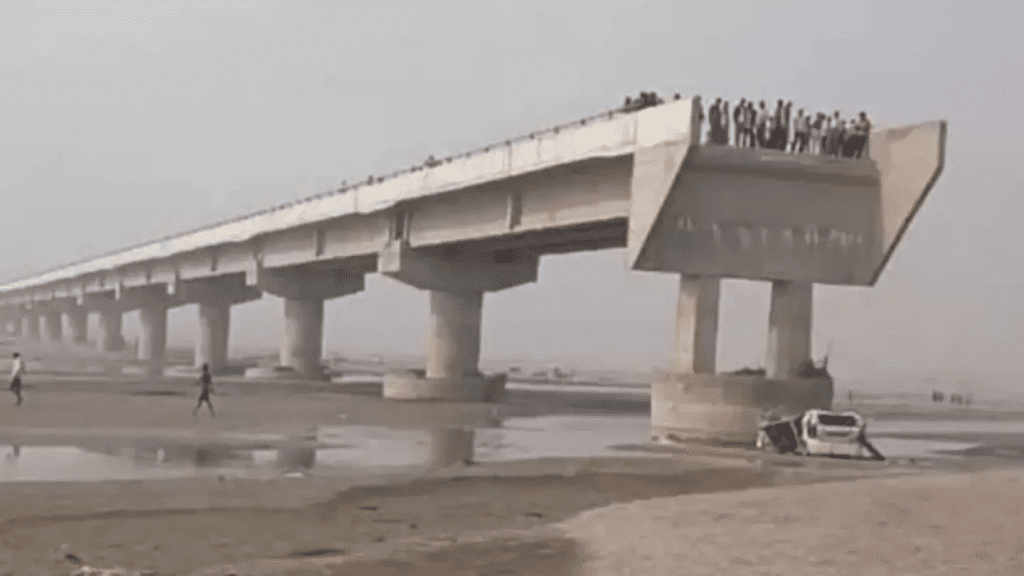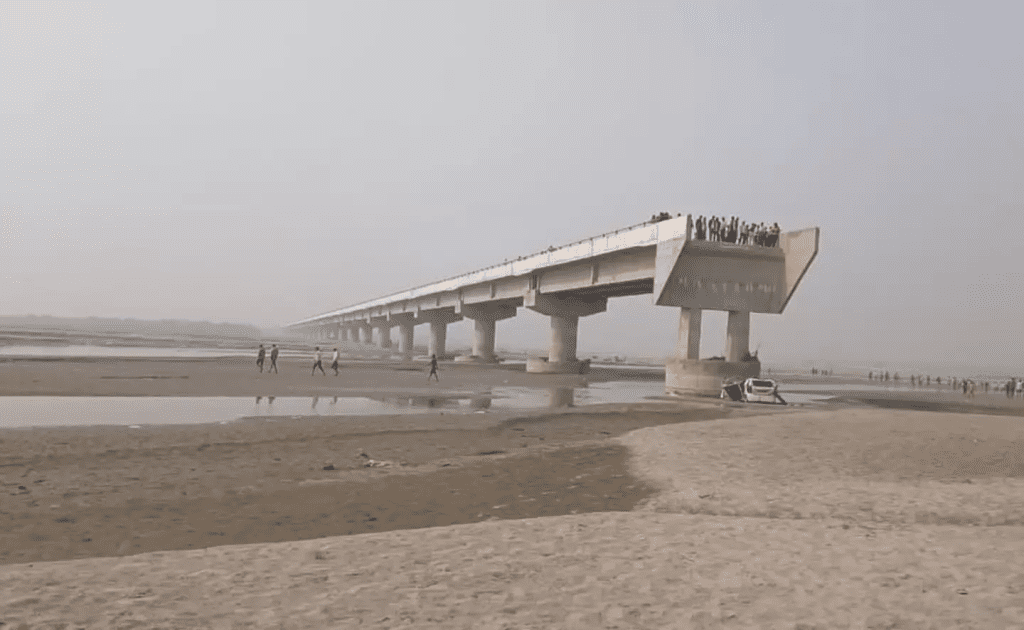A devastating accident in India has left three people dead after their car, relying on outdated sat nav directions, drove off an unfinished bridge. This tragic incident, which occurred on November 23, highlights the severe consequences of infrastructure negligence and outdated navigation systems. It has sparked outrage, grief, and a demand for accountability.
The Fatal Journey: What Happened?

The victims, identified as security guards Vivek Kumar and Amit Kumar, along with a third individual whose identity is still being confirmed, were returning from a wedding in Gurgurgam, southwest of New Delhi. At approximately 2:30 PM, their car, a Wagon R believed to be a hired taxi, unknowingly followed incorrect sat nav instructions and drove off an incomplete bridge over the Ramganga River between Faridpur and Dataganj.
Tragically, the car fell an estimated 30 to 50 feet into the river below. Their bodies were not discovered until the next morning at 9:30 AM when villagers noticed the wreckage and alerted the authorities. Local police confirmed that the three men had been trapped inside the car since the accident.
A Closer Look at the Negligence
The incomplete bridge, reportedly under construction by the UP State Bridge Corporation Ltd, had been closed since 2022 following a partial collapse. However, the approach road leading to the bridge remained open, with no clear signage or barriers to warn drivers of the danger ahead. The absence of proper safety measures has raised serious concerns among locals and the victims’ families.
One relative expressed their anger to the Hindustan Times, stating, “The officials must be held accountable for this negligence. Why was the bridge left incomplete, and why were there no safety measures in place?” Their call for a formal investigation has been echoed by many in the community.
Sat Nav’s Role in the Tragedy
Investigators have confirmed that the car relied on outdated sat nav data, which failed to reflect the bridge’s incomplete status. This highlights a broader issue with digital navigation systems that rely on real-time updates. The outdated information gave the victims a false sense of security, directing them onto a road that led to the unfinished bridge.
The reliance on GPS systems, while generally reliable, has proven fatal in cases where data is not regularly updated or where infrastructure developments are poorly documented. This incident underscores the importance of verifying route accuracy, especially in rural areas where infrastructure updates are less frequently reported.
Delayed Discovery and Emergency Response
Local villagers discovered the car the following morning in a ditch along the riverbank and called emergency services. The bodies were retrieved with the help of a boat, and the police were informed. A police statement revealed that the vehicle had fallen from the incomplete bridge, and the bodies were taken for post-mortem examinations.
The delay in discovering the accident has raised questions about the availability and effectiveness of monitoring and safety measures in the area. Inadequate lighting, lack of warning signs, and minimal oversight at the construction site contributed to the severity of this tragedy.
Authorities Take Action
Google Maps horror :
— Surya Reddy (@jsuryareddy) November 24, 2024
Wrong #GPS location took the lives of 3 people in #Bareilly, #UttarPradesh#GoogleMaps directed a car to a half-finished bridge.
Due to dense #fog, the incomplete bridge was not visible and the car falls into the #RamgangaRiver, resulting in the death of… pic.twitter.com/uTCMKTz7xG
In response to the accident, local officials have ordered an inspection of all roads and bridges in the area to ensure proper signage and safety measures are in place. Faridpur Sub-Divisional Magistrate (SDM) Gulab Singh confirmed the bridge construction was the responsibility of the UP State Bridge Corporation Ltd. He acknowledged the open approach road as a major oversight and pledged an investigation into the incident.
“We have ordered an investigation, and action will be taken against the guilty officials,” Singh stated. Meanwhile, four engineers connected to the bridge’s construction have already been arrested in connection with the deaths.
The Ripple Effect of Negligence
This tragic incident has sparked outrage across the community and beyond, bringing attention to the need for stricter infrastructure safety protocols. Poorly managed construction sites and incomplete projects not only pose risks to public safety but also erode trust in local governance.
It also raises important questions about the accountability of digital navigation providers. Should companies be held liable for failing to update their data? While sat nav systems rely on user-generated updates and official reports, gaps in these systems can lead to life-threatening consequences, as seen in this case.
Lessons from the Tragedy
This accident serves as a stark reminder of the dangers posed by incomplete infrastructure and reliance on technology without human oversight. Here are key lessons to take away:
- Prioritize Infrastructure Safety
Construction companies and local governments must ensure that all incomplete projects are properly secured with barriers, warning signs, and regular inspections. - Regularly Update Digital Navigation Systems
Navigation providers must implement systems to ensure real-time updates on road conditions and closures, especially in rural areas. - Public Awareness and Vigilance
Drivers must remain vigilant, especially in unfamiliar areas, and cross-reference sat nav instructions with local knowledge or physical signage. - Accountability is Essential
Investigations must hold both construction officials and navigation companies accountable to prevent future incidents.
The Need for Systemic Change

While the immediate response to this tragedy focuses on identifying those responsible, it also highlights the systemic issues in road safety and infrastructure management. From outdated sat nav systems to incomplete projects left without safeguards, these problems demand a comprehensive approach.
The victims’ families and communities are justified in their grief and anger. Lives could have been saved had there been simple measures like barriers or updated navigation data. This incident should serve as a wake-up call for governments, companies, and individuals to take safety and accountability more seriously.
Conclusion
The deaths of three individuals on an unfinished bridge in India are a heartbreaking reminder of the intersection between human negligence and technological reliance. Their tragic story is one of preventable loss—a powerful call for change in how we manage infrastructure projects and update navigation systems.
As investigations continue, the hope is that this incident will lead to stricter safety measures, better sat nav systems, and ultimately, fewer tragedies like this in the future. For now, let this serve as a sobering reminder of the importance of vigilance, accountability, and the value of human lives over convenience.


